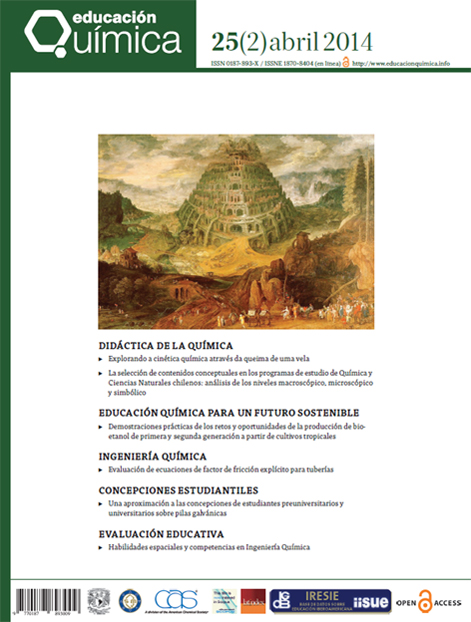La selección de contenidos conceptuales en los programas de estudio de Química y Ciencias Naturales chilenos: análisis de los niveles macroscópico, microscópico y simbólico
Main Article Content
Abstract
The selection of the conceptual contents in chemistry constitutes a key aspect when approaching itsteaching. This work analyses what of and how the topic “matter” is presented in the Chilean primaryand secondary curriculum of the disciplines of Natural Sciences and Chemistry, by means of usingconcepts and frequency maps. Consequently, range and conceptual diversity were determined in accordancewith the levels of representation used in chemistry. The main findings indicate that theselection of contents is varied, however characterized for being discontinuous and not well structured.The majority of the concepts are qualitative and macroscopic, conversely microscopic andsymbolic concepts are introduced late and abruptly in the programs, being concentrated at the end ofprimary and at the onset of secondary education. These findings have a direct impact on the designof the curriculum that guides the chemistry programs, on how these are taught, on the initialand continuous training of science teachers, and on the improvement of the quality of the learningoutcomes.
Article Details
Citas en Dimensions Service

Educación Química por Universidad Nacional Autónoma de México se distribuye bajo una Licencia Creative Commons Atribución-NoComercial-SinDerivar 4.0 Internacional.
Basada en una obra en http://www.revistas.unam.mx/index.php/req.




